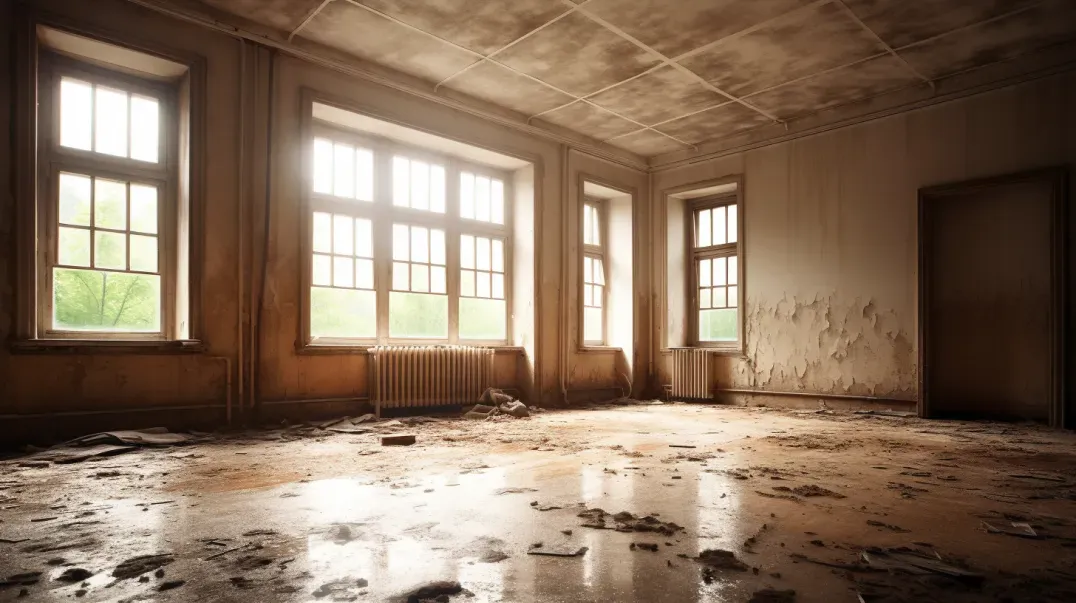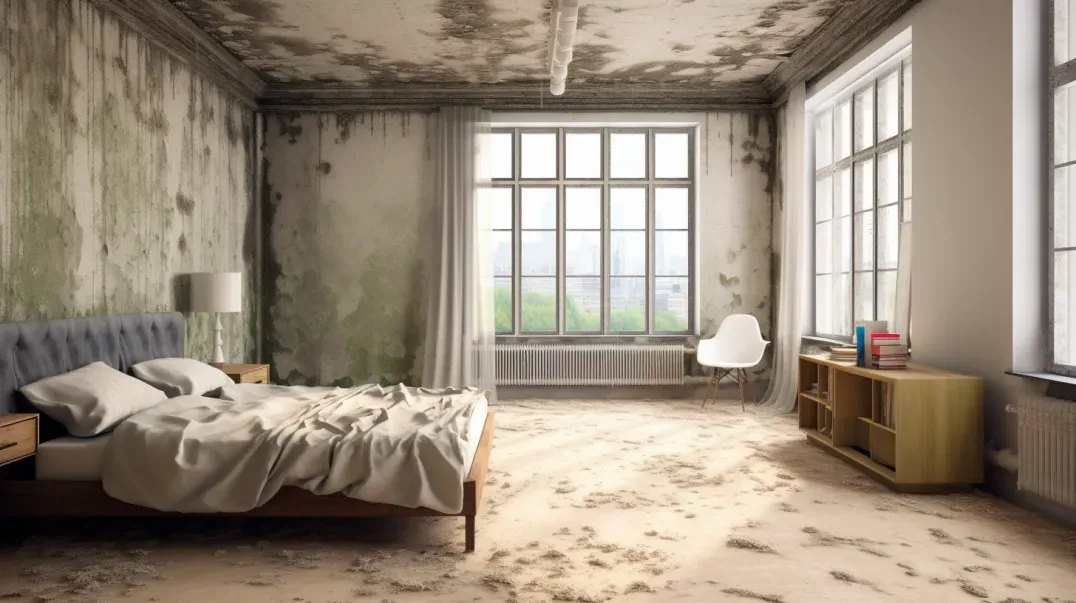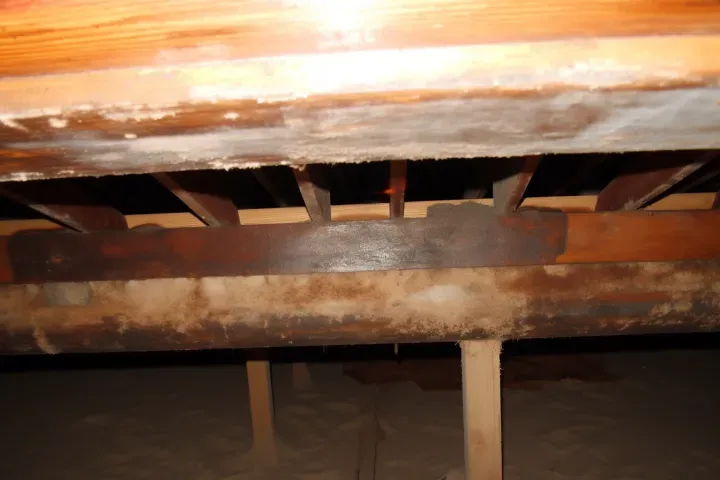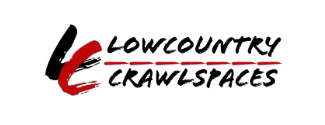The Crucial Role of Early Mold Detection in Homes
Welcome to our insightful exploration into the world of mold detection, a critical aspect of maintaining a healthy and safe living environment. Mold, a common yet often insidious issue, can lurk in various parts of our homes, causing not only structural damage but also posing significant health risks. This blog is dedicated to underscoring the importance of early mold detection and identifying the common areas where mold tends to grow, such as crawl spaces, basements, and bathrooms.
Early detection of mold plays a pivotal role in preventing its spread and mitigating potential health hazards. Mold thrives in moist, dark environments and can often go unnoticed until it becomes a larger problem. By understanding where to look and what signs to watch for, homeowners can take proactive steps to address mold issues before they escalate.
In this introduction, we will delve into the typical hotspots for mold growth within homes. Crawl spaces, often out of sight, provide the perfect breeding ground for mold due to their high humidity and limited airflow. Basements, another common site, can harbor mold due to water seepage or condensation. Bathrooms, with their constant exposure to moisture, are also prone to mold growth. Recognizing these vulnerable areas is the first step in effective mold management.
Join us as we navigate the nuances of mold detection, offering practical advice and expert insights. Our goal is to empower you with the knowledge needed to keep your home mold-free and your living environment healthy.
Understanding Mold: Basics and Risks
Gaining a comprehensive understanding of mold is essential for homeowners and residents to effectively manage and mitigate its impact. This section provides an overview of what mold is, its common types in households, and the associated health and structural risks.
What is Mold?
Description of Mold and Its Common Types in Households
Mold is a type of fungus that can grow both indoors and outdoors, thriving in moist, warm environments. It reproduces through tiny spores that travel through the air, making it easy to spread and grow in suitable conditions. In households, mold is commonly found in areas with high humidity levels, such as bathrooms, kitchens, basements, and crawl spaces.
Some common types of household mold include:
- Aspergillus: Often found on food and in air conditioning systems, it can cause allergic reactions and respiratory infections.
- Cladosporium: Typically green or black, this mold grows on fabrics and wood surfaces, potentially causing breathing difficulties and allergies.
- Stachybotrys Chartarum (Black Mold): Known for its black color, it's particularly dangerous due to its toxin-producing capabilities, leading to severe health issues.
- Penicillium: Recognizable by its blue or green color, it can spread quickly and cause allergies and asthma.
Health and Structural Risks Associated with Mold
Brief on Potential Health Risks and Damage to Property
Mold poses significant risks to both health and property:
- Health Risks: Exposure to mold can lead to various health problems. Common symptoms include allergic reactions, respiratory issues, headaches, and in severe cases, neurological problems and toxic effects. People with asthma or compromised immune systems are at a higher risk of experiencing severe symptoms.
- Structural Risks: Beyond health concerns, mold can cause considerable damage to buildings. It can weaken the structural integrity of a home by breaking down organic matter found in wood, drywall, and other materials. This not only leads to costly repairs but can also decrease the property's value.
- Understanding these risks is crucial for taking timely action to address mold issues, ensuring the safety and well-being of occupants and the longevity of the property.
Visual Inspection for Mold Detection
Conducting a visual inspection is a fundamental step in detecting mold in your home. This section guides you through identifying common signs of mold and highlights key areas to inspect for potential mold growth.
Identifying Common Signs of Mold
Descriptions of Mold Appearance, Color Variations, and Growth Patterns
Mold can vary in appearance, making it sometimes challenging to identify. Common characteristics include:
- Texture: Mold typically appears as a fuzzy or slimy layer, indicating active growth.
- Color: Mold comes in various colors, including black, green, white, and even red or blue. The color can provide clues about the type of mold and its potential risks.
- Smell: A musty, earthy odor often accompanies mold growth, even if it's not visibly apparent.
Bullet Points:
- Discoloration on Walls, Ceilings, and Floors: Look for unusual stains or discolorations, which can be a sign of mold growth beneath the surface.
- Visible Mold Growth in Damp Areas: Check areas that are prone to moisture, such as around leaks in roofs, windows, or pipes, as well as in kitchens and bathrooms.
Areas to Inspect for Mold Growth
Key Areas in the Home Prone to Mold, Including Hidden Spots
When inspecting your home for mold, pay special attention to these areas:
- Crawl Spaces and Basements: These areas are often humid and poorly ventilated, making them ideal for mold growth.
- Under Sinks and Around Plumbing: Leaks and condensation in these areas create a perfect environment for mold.
- Behind Wallpapers and Paneling: Mold can grow unseen behind wall coverings, especially if there's moisture seepage.
- Ceiling Tiles and Carpet: These materials can absorb moisture and harbor mold, particularly after flooding or leaks.
- HVAC Systems: Air conditioning and heating systems can accumulate moisture and distribute mold spores throughout the home.
Regular inspections of these areas can help catch mold growth early, preventing its spread and reducing the risk of health problems and structural damage.
Using Your Sense of Smell to Detect Mold
Your sense of smell can be a powerful tool in identifying mold presence in your home. Mold often emits a distinctive odor, which can be the first indication of a hidden mold problem. This section will guide you on recognizing mold odor and locating its source.
Recognizing Mold Odor
Description of the Musty Smell Associated with Mold
Mold typically produces a musty, earthy smell, reminiscent of dampness and decay. This odor is a result of microbial volatile organic compounds (MVOCs) released during the mold's growth and metabolism process. The intensity of the smell can vary depending on the mold type and the extent of the infestation. Some key characteristics of mold odor include:
- Distinctive Mustiness: Unlike other household odors, mold gives off a persistent musty smell that doesn't dissipate easily.
- Stronger in Closed Spaces: The odor may be more pronounced in closed or poorly ventilated areas, such as basements, attics, or behind closed doors.
Locating the Source of Moldy Smells
Tips for Narrowing Down the Exact Location of Mold Growth
Finding the exact source of a moldy smell can be challenging, especially if the mold is not visibly apparent. Here are some tips to help you locate it:
- Follow the Intensity: Often, the strongest smell is closest to the mold source. Move around the area and notice where the odor is most concentrated.
- Check for Moisture: Since mold needs moisture to grow, look for areas with water damage, leaks, or condensation.
- Inspect Hidden Areas: Mold can grow in hidden spots. Check under carpets, behind wallpaper, inside cabinets, and in ventilation ducts.
- Consider Recent Water Events: If your home has recently experienced flooding or leaks, inspect these areas first, as they are likely spots for mold growth.
- Use a Flashlight: A bright light can help you spot mold signs in dark corners and crevices.
If the smell persists despite thorough inspection, it may be necessary to consult a professional mold inspector who can conduct a more comprehensive examination.
DIY Mold Testing Kits
For homeowners concerned about mold growth, DIY mold testing kits can be a useful tool. These kits offer a way to detect the presence of mold in your home without the immediate need for professional services. This section explores how these kits work and discusses their advantages and limitations.
How Do Mold Testing Kits Work?
Introduction of Different Types of Mold Testing Kits Available
There are several types of DIY mold testing kits available on the market, each designed to identify mold presence in different ways:
- Air Testing Kits: These kits test the concentration of mold spores in the air. They usually involve a petri dish with a growth medium that captures airborne mold spores over a set period.
- Surface Testing Kits: These kits are used to test for mold on various surfaces. They typically include swabs that you wipe over a suspected moldy surface, then place in a growth medium to check for mold spores.
- Bulk Testing Kits: These involve collecting samples of materials from your home, such as pieces of wallpaper or carpet, and sending them to a lab for analysis.
Each type of kit has its specific method of use, and choosing the right one depends on your particular mold detection needs.
Pros and Cons of DIY Mold Testing Kits
Effectiveness, Ease of Use, and Limitations
While DIY mold testing kits can be a convenient first step in mold detection, they come with both advantages and limitations:
Pros:
- Cost-Effective: These kits are generally less expensive than hiring a professional mold inspector.
- Immediate Results: Some kits offer quick results, giving you a timely indication of mold presence.
- Ease of Use: Most kits come with straightforward instructions, making them accessible for non-professionals.
Cons:
- Limited Scope: DIY kits may not detect all types of mold or the extent of an infestation.
- Accuracy Concerns: The accuracy of these kits can vary, and they may not provide a comprehensive understanding of the mold issue.
- No Expert Assessment: Unlike professional testing, DIY kits do not offer expert analysis or advice on remediation.
-
In conclusion, while DIY mold testing kits can be a helpful tool in identifying mold presence, they should not be solely relied upon for a complete assessment. For a thorough evaluation and effective remediation plan, consulting with a professional mold inspector is often necessary.
Moisture Detection as a Mold Indicator
Detecting moisture in your home is a critical step in preventing mold growth. Since mold thrives in moist environments, identifying areas with high moisture levels can help you address potential mold issues before they escalate. This section introduces tools for moisture detection and explains how to interpret their readings.
Tools for Detecting Moisture
Introduction to Moisture Meters and Humidity Gauges
Two key tools for detecting moisture in your home are moisture meters and humidity gauges:
- Moisture Meters: These devices are designed to measure the moisture content in various materials, such as wood, drywall, and concrete. They come in two types: pin-type meters, which measure moisture at a specific point, and pinless meters, which can scan larger areas.
- Humidity Gauges (Hygrometers): These instruments measure the humidity level in the air. High humidity levels can indicate a higher risk for mold growth, especially if they exceed 60%.
Both tools are invaluable for homeowners looking to identify areas at risk for mold growth due to excess moisture.
Interpreting Moisture Readings
Understanding What Moisture Levels Indicate Mold Growth Potential
Interpreting the readings from moisture detection tools is crucial in assessing mold growth risk:
- Moisture Meters: The ideal moisture level in building materials should generally be below 20%. Readings above this threshold can indicate a risk for mold growth. It's important to note that the acceptable moisture level can vary depending on the material and local climate conditions.
- Humidity Gauges: Indoor humidity should ideally be between 30% and 50%. Consistently higher levels can create an environment conducive to mold growth. Pay attention to fluctuations in humidity, especially in areas like basements and bathrooms, where moisture levels can be higher.
Regular monitoring with these tools can help you maintain optimal moisture levels in your home, effectively reducing the risk of mold growth.
FAQs
Contact Lowcountry Crawlspaces Today!
Lowcountry Crawlspaces will do everything we can to ensure your experience with us is excellent.
Request A FREE Estimate
CHECKOUT RECENT POST



Schedule Your FREE Crawl Space Evaluation Today
There Is No Crawl Space Job We Can’t Fix!




